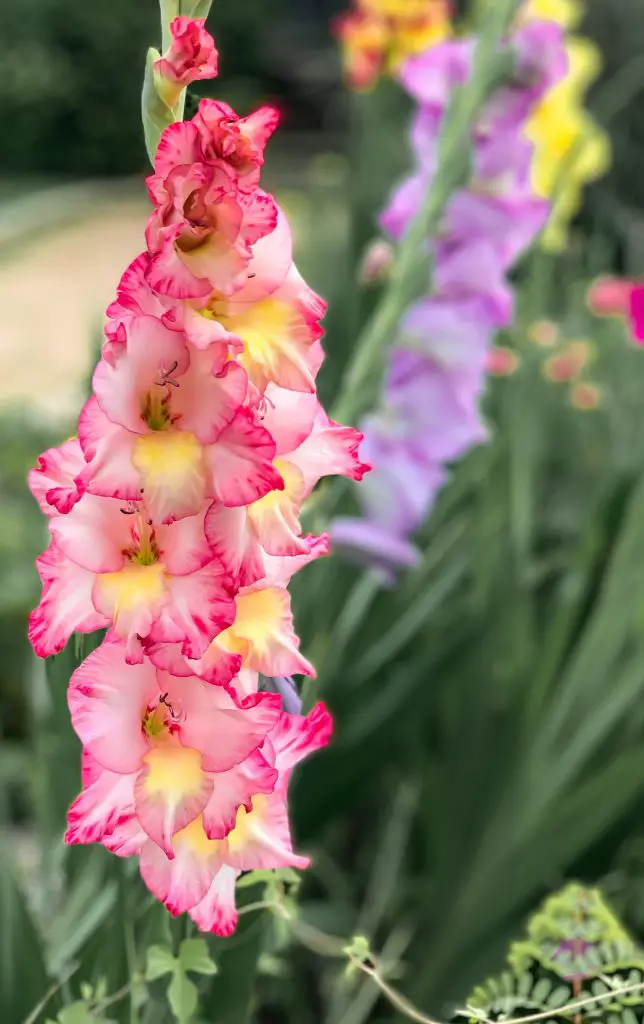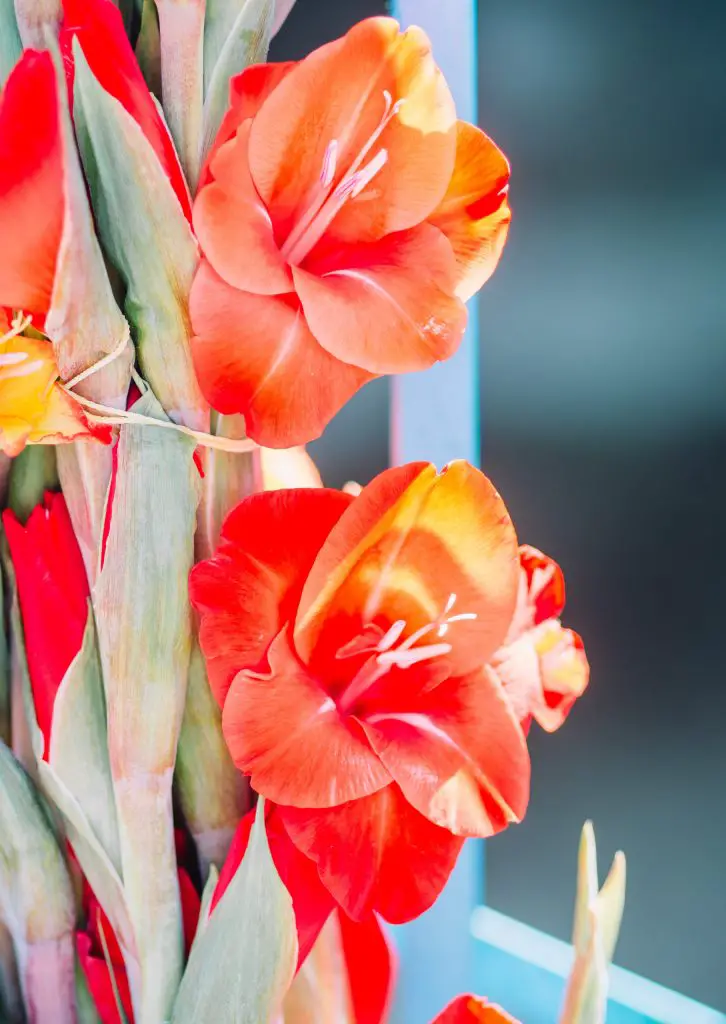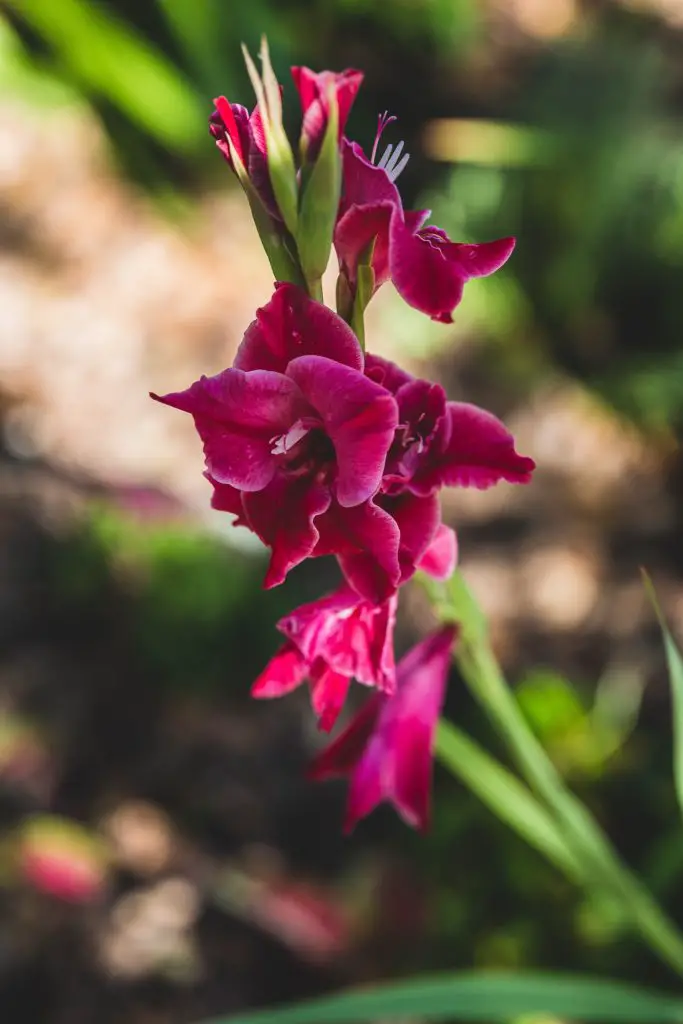Do Gladiolus Spread? Are They Invasive? Gladiolus is a popular summer flowering plant that is produced via corms every year. They produce beautiful spires of flowers in late summer, however, one of the most common questions associated with planting gladiolus is do the bulbs spread, and are they invasive in any way?
Gladiolus plants will gradually spread over time but the spread is generally quite slow as the corms that produce the plant take 2 to 3 years to multiply if left to their own devices. As a result of this, they are generally considered not to be invasive.
However, if you are keen to get large amounts of gladiolus plants into your garden there are a couple of techniques that can be implemented that will accelerate the rate of multiplication of the plants.

How To Propagate Gladiolus Corms
As mentioned above gladiolus plants will progressively produce new corms on the side of existing ones however this is quite a slow process that can take a few years but there are a couple of things that you can do that will speed up the process.
The first common method that is used to increase the number of plants is to simply cut the corms in half or even quarters depending upon the size of the corm. However, when undertaking this process it is important to cut the corns from above to ensure that all cuttings have at least some portion of the basal plate included as part of the divided corn.
The basel plate is the bottom section of the corm where the roots generated from as such it is important to ensure that are you get at least a portion of them in each cutting. If the size of the basal plate is relatively small it will limit the extent of the division.
When you cut the corms in half there is that there is a yellow outer layer which is where the plants’ sugars are stored and also a section that is paler in color. You need to have sections of both in each cutting to ensure that the plant successfully propagates.
Additionally, it is also important to note that the smaller the sections of corms the less likely it is to flower in the first year. So there is somewhat of a trade-off between the number of plants vs the number of flowers in the first year.
When you cut the bulbs in half it will expose them to an increased risk of bacterial and fungal infection. To reduce the chances of this happening a fungicide can be applied to the surface which will help to keep these diseases out. Many gardeners purchase commercially made fungicides however one of the best performing fungicides that are commonly used to prevent powdery mildew is milk. To apply the milk to the bulbs simply submerge the bulb in the milk allow it to dry off before planting.
Another common method that is used to encourage the corm to create greater numbers of new corms is to scar the surface of the corn before planting it. This simply means cutting partially into the surface of the corm at different points. This will encourage the plant to produce new growth on the side of the corm that will eventually form a new plant.
As a general rule, I like to put in approximately 3 to 4 cuts in anyone corm as any more than that will increase the risk of infection too much. To counteract this effect dip the corm in milk before planting it into the garden.

How To Grow Gladiolus
Gladiolus are extremely easy plants to grow and they require very little maintenance throughout the season. As gladiolus produce flowers in late summer or early autumn they can be planted in the spring, unlike early flowering bulbs.
The bulbs should be planted in free-draining soil at a depth of approximately 4 inches. If you are wanting to grow them in clumps it is advisable to plant them around 4 inches apart as planning them closer together will reduce the extent of spread over time. However, if you are wanting to increase your stock it is better to plant the bulbs further apart as this will allow space for them to multiply more quickly over time.
Once the plant has been put into the ground the next important step is to backfill the planting hole and then apply a layer of mulch over the surface that is approximately 2 to 4 inches thick. After this is completed there is generally very little to do in terms of maintenance until the plant flowers in summer apart from ensuring that the plant is regularly watered.
When the plant flowers begin to fade in late summer the plant can be deadheaded however it is important to ensure that the foliage remains on the plant until it dies back completely. The reason for this is that the foliage will continue to photosynthesize even after the flower has faded which is important for the following year. It allows the plant to continue to produce sugar which is stored in the corm for the following year’s flower.

If you live in zone 8 to 10 the corms can be left in the ground throughout the winter and they will flower the following year. However, in colder locations, it will be important to dig up the plants as they may not survive a hard freeze.
If you need to store the corms it is best done in something like sawdust as that mimics the conditions that the plant would experience in soil. However, it is important to store the container in a location that will not allow the sawdust to freeze solid as that will have the same effect as leaving the corms in soil.
When placing the corns in the sawdust it is important to ensure that they do not directly come and contact with each other as this will reduce the chances of disease transferring from one corm to another if there is a problem. If you follow these directions you can expect to be planting the gladiolus for many years to come.
I hope you found this article useful and have great success with your gladiolus. If you have any questions or comments please leave them in the sections below.
Relevant Articles
Is It Too Late To Plant Gladiolus Bulbs?
Can You Plant Bulbs In Spring?
How To Tell When Daffodils Are Ready To Harvest?
